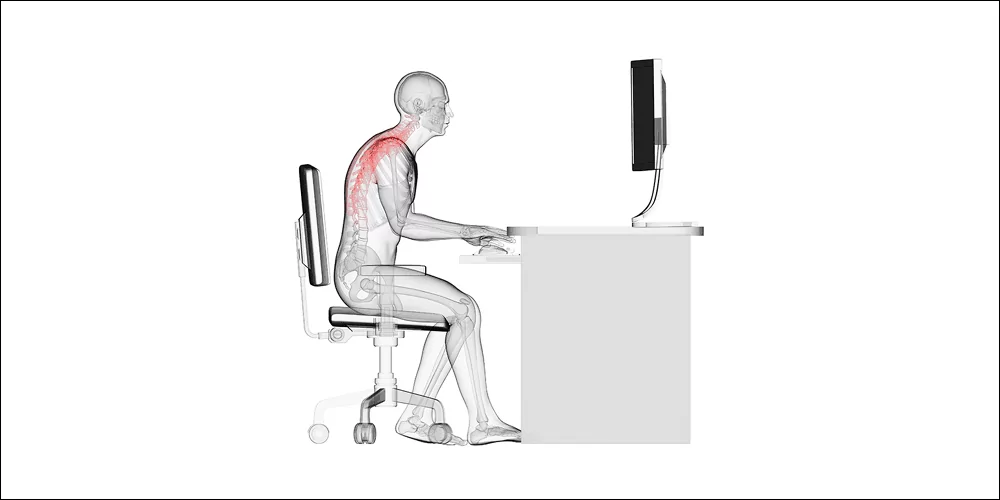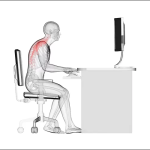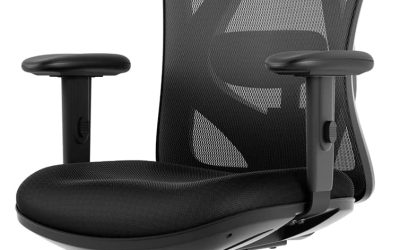
Mobile gaming has remarkably gained popularity across the globe as both a recreational pastime and an Olympic sport. However, some work-related characteristics, such as extended screen time, repetitive motions, poor posture, and a sedentary lifestyle, raise the chance of developing chronic illnesses.
Professional gamers experience headaches, neck immobility, back and wrists stiffness, blurred vision, and mental health problems.
How Does Streaming And Gaming For A Long Time Affect The Musculoskeletal System?
The musculoskeletal system has issues due to prolonged mobile gaming postures (forward neck, slumped posture, and bent shoulder).
During extended sitting, the neck and back muscles are in an improper posture or position, which can lead to muscle fatigue and tension. Muscle fatigue compromises the integrity of the spinal support and puts more mechanical strain on the ligaments and discs, leading to musculoskeletal pain and discomfort.
Neck, shoulder, and upper limb pain have a connection to prolonged mobile phone use and gaming in a more stretched neck position.
In the beginning, your muscles work hard to keep your head up. However, as the muscles contract, they increase the pressure on the discs. The discs begin to wear out more quickly as a result, and as a result, they may burst or even bulge. You may experience discomfort, numbness, or paralysis in the arm if the ruptured disc pinches a nerve, which may necessitate surgical intervention.
What are the symptoms of game streaming and e-sport-associated neck disorder?
Common problems include
- Headaches
- Stiff necks
- Neck cramp
- Soreness in the area between your shoulder blades
- Some claim that after spending a lot of time staring down, they find it hard to look up.
In extreme circumstances, a pinched nerve in your neck may produce:
- Numbness
- Tingling sensation, or
- Weakness that radiates into your arms
What Are The Healthy Practice For Twitch streamers, Gamers, And Elite e-sport?
Gamers and non-gamers can be empowered to lower their risk of injury and chronic illness linked to sedentary lifestyles. The empowerment is by educating them on healthy habitual habits.
Position:
Gaming chairs should have adequate back and neck support and be ergonomically constructed. Gamers’ feet must be flat on the ground; otherwise, they would naturally “hook” together and hurt their feet. They must avoid abnormal neck bending by aligning their eyes with the top of their monitor(s). When using the keyboard, the forearms and wrists should be at (or just a little above) desk level, with any required chair alteration and desk height. It lessens wrist compression, a frequent source of pain for gamers.
Your chair inclination should be 25 to 30 degrees, and you should have sufficient back support to avoid slouching. The back and neck discs are subjected to significantly lower stresses in this position than they would be in a vertical position, and the back and neck muscles are no longer required to keep the head up.
As you tilt back, a portion of your body weight shifts from your spine to the chair. As a result, your spine experiences far less force, which reduces your pain significantly. Most individuals instinctively choose reclining chairs while resting because it relieves neck and back pain more effectively than sitting straight.
Exercise, rest, and nutrition:
A gamer must prioritize physical activity. The American College of Sports Medicine suggests 150 minutes or more per week of moderate-intensity workouts for healthy individuals. Taking quick pauses to walk around every hour will enhance blood flow throughout the body during extended sitting (such as during gaming sessions) and reduce the risk of DVT. For the brain to function at its best, blood flow must increase. When you engage in aerobic activity, oxygenated blood is delivered to your weary muscles and washes away the inflammatory and painful substances.
Similarly, getting enough sleep and rest is essential for improving physical and mental function. Make sure you get at least seven hours of quality sleep per night, and if necessary, encourage the use of dark shades and earplugs.
Nourishment
Maintaining a gamer’s health requires proper nourishment as well. Dietary recommendations urge reducing sugar, salt, and saturated fats while consuming a range of nutrient-dense foods such as fruits, vegetables, whole grains, lean meats, and legumes. Eat moderately and primarily plants, as author Michael Pollan advised.
This straightforward guidance lowers the risk of developing chronic diseases (such as obesity, diabetes, and cardiovascular disease) and gives gamers the energy to make crucial game-winning choices or plays.
Summary
Chronic bad posture is the source of neck pain when playing video games. When playing video games, for instance, many of us slouch forward, which puts our necks in awkward positions and can cause abnormal muscle activation and imbalance.






